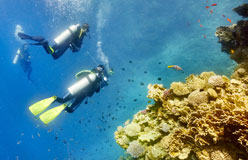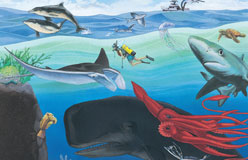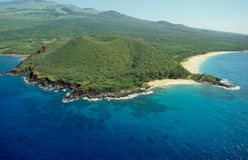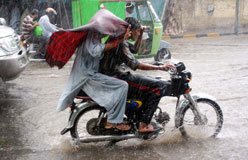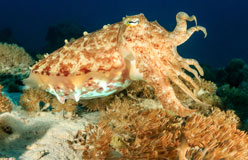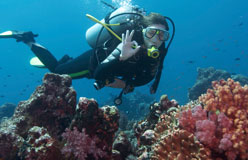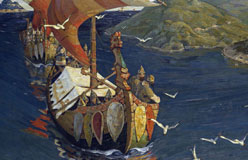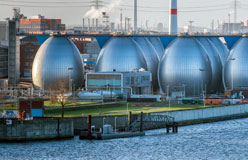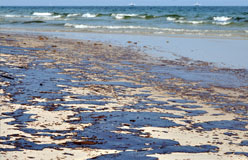Imagine taking an ocean voyage. But instead of going around the world, you travel straight down to the bottom of the ocean.
On your trip, you pass through the five distinct layers of the ocean. You go from sunny to pitch-black. The water goes from warm to ice-cold and from active to still. At first there’s almost no pressure, and at the bottom, it’s bone-crunching pressure. While some sea creatures live in several zones, others can live in only one zone.
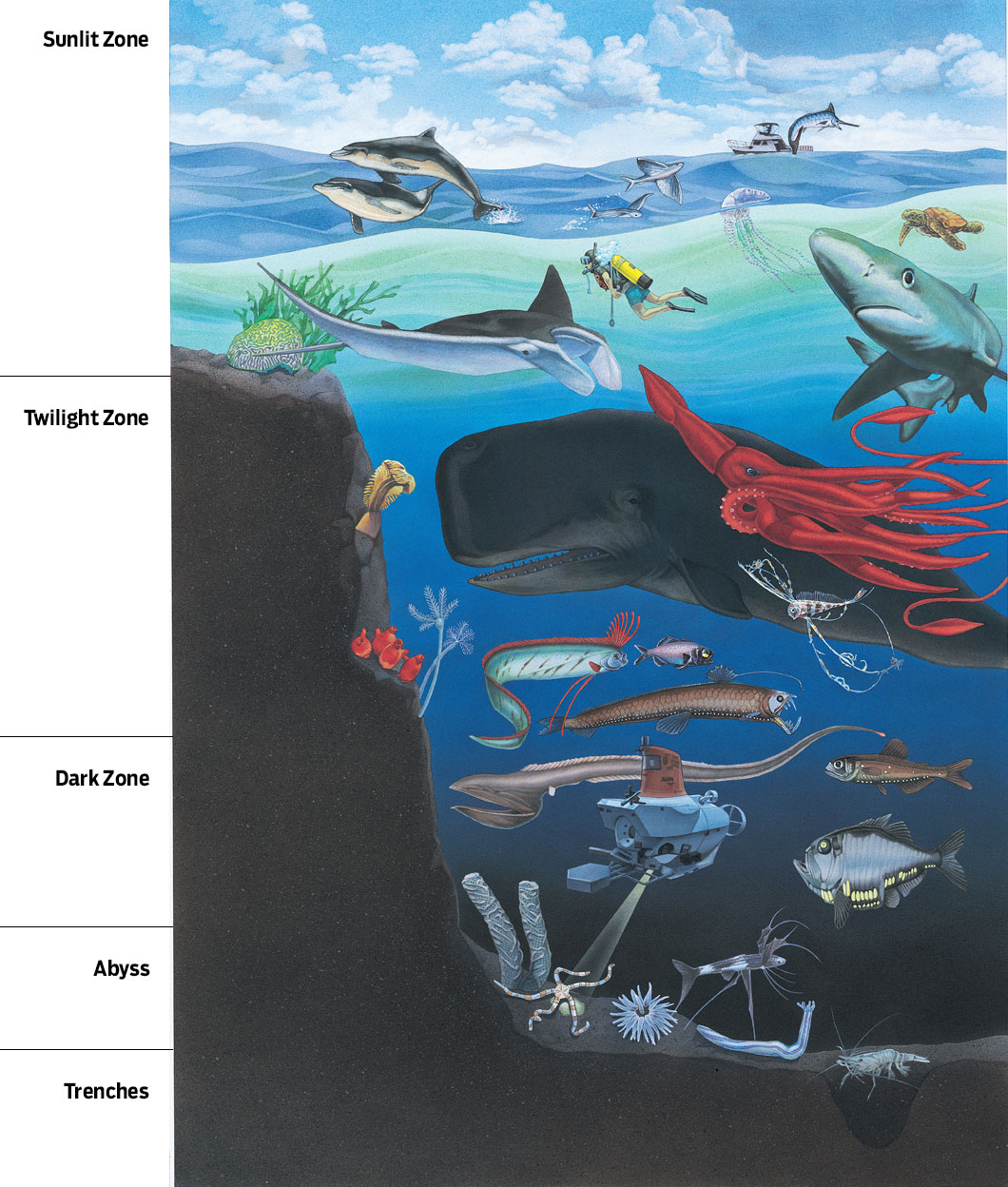
Kelp
Dolphin
Blue marlin
Man-of-war
Flying fish
Scuba diver 100 feet below
Hawksbill turtle
Blue shark
Brain coral
Manta ray
The sperm whale, a mammal, does not stay in one zone. After it feeds on squid at around 1,600 feet, it comes to the surface for air.
0–660 feet
The water is warm, sunny, and moving. Most of the ocean’s plants and animals live here.
660–3,300 feet
Temperatures can be as low as 41°F. Because of the half-light, many fish in this zone have body lights along their bellies and tails. This helps them find prey and mates.
Sea pen
Sea squirt
Oarfish
Flashlight fish
Ribbon fish
Sea lily
Viper fish
Giant squid sometimes go to the surface at night. They are the largest invertebrates in the world, growing up to 66 feet long! Invertebrates have no skeletons.
3,300–13,200 feet
Temperatures are around 35°F. Water pressure can be up to a thousand times as great as on the surface. There’s very little to eat, so many fish have huge mouths. Their stomachs stretch to help them catch and keep whatever they find.
Venus flower basket sponge
Gulper eel
Lantern fish and some squid spend their days here. Then they go up to the surface to feed at night.
13,200–19,800 feet
The abyssal plains cover almost half the deep seafloor. Here, mud made from the skeletons of tiny sea animals and plants builds up. In places it can be more than a mile thick. It is still, dark, and very cold down here.
A submersible can take one pilot and two scientists as deep as 15,810 feet. Much smaller, remote-controlled crafts (with no crew) can go deeper still. They can enter the ocean trenches.
Hatchet fish
Tripod fish
Over 19,800 feet
Only specially adapted creatures can survive this deep. The pressure is intense, and there’s very little food. It’s also very cold and totally dark.
Brittle star
Deep-sea anemone
Sea cucumber
Deep-sea prawn
Check It Out!
Why aren’t there any plants in the Dark Zone or below?
Plants need sunlight in order to live.
